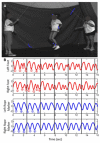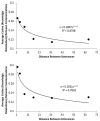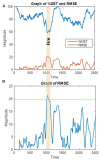Understanding and Modeling Teams As Dynamical Systems
- PMID: 28744231
- PMCID: PMC5504185
- DOI: 10.3389/fpsyg.2017.01053
Understanding and Modeling Teams As Dynamical Systems
Abstract
By its very nature, much of teamwork is distributed across, and not stored within, interdependent people working toward a common goal. In this light, we advocate a systems perspective on teamwork that is based on general coordination principles that are not limited to cognitive, motor, and physiological levels of explanation within the individual. In this article, we present a framework for understanding and modeling teams as dynamical systems and review our empirical findings on teams as dynamical systems. We proceed by (a) considering the question of why study teams as dynamical systems, (b) considering the meaning of dynamical systems concepts (attractors; perturbation; synchronization; fractals) in the context of teams, (c) describe empirical studies of team coordination dynamics at the perceptual-motor, cognitive-behavioral, and cognitive-neurophysiological levels of analysis, and (d) consider the theoretical and practical implications of this approach, including new kinds of explanations of human performance and real-time analysis and performance modeling. Throughout our discussion of the topics we consider how to describe teamwork using equations and/or modeling techniques that describe the dynamics. Finally, we consider what dynamical equations and models do and do not tell us about human performance in teams and suggest future research directions in this area.
Keywords: communication analysis; interpersonal coordination; non-linear dynamics; team cognition; teams; teamwork.
Figures












References
-
- Abraham R., Shaw C. D. (1992). Dynamics: The Geometry of Behavior, 2nd Edn. Boston, MA: Addison-Wesley.
-
- Bak P. (1996). How Nature Works: The Science of Self-Organized Criticality. New York, NY: Copernicus. 10.1007/978-1-4757-5426-1 - DOI
-
- Bakhtin M. M. (1986). Speech Genres and other Late Essays (eds Emerson C., Holquist M., McGee trans. V. W.). Austin, TX: University of Texas Press.
Publication types
LinkOut - more resources
Full Text Sources
Other Literature Sources
Research Materials

